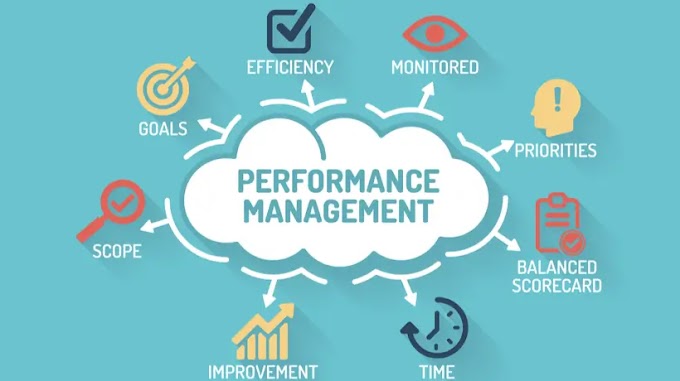Performance management is a critical component of organizational success. It involves a continuous process of setting expectations, providing feedback, coaching, and evaluating results. Performance management is essential because it enables organizations to maximize their human resources by aligning individual goals with organizational objectives. This article will explore why performance management is important and how to build a strong performance management system.
I. Importance of Performance Management
Performance management is vital for several reasons, including the following:
- Maximizes Employee Performance: Performance management helps employees to better understand their roles, responsibilities, and goals, which can lead to increased motivation and engagement.
- Increases Productivity: By setting clear goals and expectations, performance management can help employees to focus on tasks that contribute to organizational objectives, resulting in increased productivity.
- Aligns Individual and Organizational Objectives: Performance management helps align individual goals with organizational objectives. This alignment ensures that employees are working towards achieving the same goals as the organization, which can result in increased efficiency and effectiveness.
- Facilitates Learning and Development: Performance management can help identify gaps in skills and knowledge, which can then be addressed through training and development opportunities.
II. Benefits of Performance Management
Performance management is a process that involves setting goals, providing feedback, and evaluating progress towards achieving those goals. A well-designed performance management system can provide numerous benefits to both employees and organizations. In this section, we will discuss some of the key benefits of performance management.
A. Clear goals and expectations
One of the primary benefits of performance management is the establishment of clear goals and expectations for employees. When employees understand what is expected of them and have a clear understanding of their role within the organization, they are better able to focus their efforts and work towards achieving those goals. Clear goals also provide a basis for measuring performance, which is essential for determining whether employees are meeting expectations and where improvements may be necessary.
B. Improved employee motivation and engagement
Another benefit of performance management is the potential for improved employee motivation and engagement. When employees feel that their contributions are valued and that their work is aligned with the goals of the organization, they are more likely to be motivated to perform at a high level. Regular feedback and recognition of accomplishments can also help to boost employee morale and motivation, leading to increased job satisfaction and a stronger commitment to the organization.
C. Increased productivity and performance
A well-designed performance management system can also lead to increased productivity and performance. By establishing clear goals, providing regular feedback, and measuring progress, employees are able to focus their efforts on the most important tasks and make necessary adjustments to their work as needed. This can help to streamline workflows, improve efficiency, and ultimately lead to better overall performance.
D. Better alignment of individual and organizational objectives
Performance management can also help to align individual and organizational objectives. When employees understand how their work contributes to the success of the organization and have a clear understanding of the organization's goals and objectives, they are better able to focus their efforts in ways that support those objectives. This alignment can help to improve overall organizational performance and increase the likelihood of achieving strategic objectives.
E. Facilitation of learning and development
Finally, performance management can facilitate employee learning and development. Regular feedback and coaching can help employees identify areas for improvement and develop new skills and competencies. Performance reviews can also serve as a basis for identifying opportunities for employee training and development, which can help to build a more skilled and capable workforce.
In summary, a well-designed performance management system can provide numerous benefits to both employees and organizations, including the establishment of clear goals and expectations, improved employee motivation and engagement, increased productivity and performance, better alignment of individual and organizational objectives, and facilitation of employee learning and development. In the next section, we will discuss how to build a strong performance management system that can deliver these benefits. II. Benefits of Performance Management.
III. Building a Strong Performance Management System
A. Defining clear goals and expectations
One of the most important aspects of performance management is setting clear goals and expectations for employees. When employees have a clear understanding of what is expected of them, they are better able to focus their efforts and work towards achieving those goals.
To define clear goals and expectations, employers should:
- Use SMART criteria to set goals that are specific, measurable, achievable, relevant, and time-bound.
- Communicate goals and expectations clearly and regularly, both verbally and in writing.
- Set expectations for performance standards, such as quality, quantity, and timeliness of work.
B. Regular communication and feedback
Regular communication and feedback are essential components of a strong performance management system. By providing ongoing feedback, employers can help employees stay on track and make any necessary adjustments to their performance.
To facilitate regular communication and feedback, employers should:
- Schedule regular check-ins with employees, such as weekly or monthly meetings.
- Encourage open and honest communication.
- Provide constructive feedback that is focused on specific behaviors and outcomes.
- Recognize and reward good performance.
C. Creating an objective and fair performance evaluation process
A fair and objective performance evaluation process is critical for building a strong performance management system. The evaluation process should be based on clear and measurable performance criteria, and should be free from bias and subjectivity.
To create an objective and fair performance evaluation process, employers should:
- Define performance criteria that are relevant to the employee's job responsibilities and goals.
- Develop an evaluation process that is fair, consistent, and based on objective criteria.
- Train managers and supervisors on how to conduct effective evaluations and avoid bias.
- Ensure that employees have an opportunity to provide input and feedback on the evaluation process.
D. Offering opportunities for employee growth and development
A strong performance management system should provide opportunities for employees to grow and develop their skills and knowledge. This can include training, coaching, mentoring, and other forms of professional development.
To offer opportunities for employee growth and development, employers should:
- Develop a training and development program that is aligned with the organization's goals and objectives.
- Provide coaching and mentoring to help employees improve their skills and knowledge.
- Encourage employees to take on new challenges and responsibilities.
- Provide opportunities for employees to attend conferences and workshops to learn new skills and network with peers.
E. Encouraging continuous improvement
Finally, a strong performance management system should encourage continuous improvement. This means that employers should be constantly looking for ways to improve the system and make it more effective.
To encourage continuous improvement, employers should:
- Solicit feedback from employees on the performance management system.
- Evaluate the system regularly to identify areas for improvement.
- Use data and analytics to measure the effectiveness of the system.
- Implement changes and improvements based on feedback and evaluation results.
Overall, building a strong performance management system requires a focus on clear communication, objective evaluation, and ongoing opportunities for employee growth and development. By following these best practices, employers can create a system that helps employees achieve their goals and improve their performance.
IV. Common Challenges in Performance Management
Despite the benefits of performance management, there are common challenges that organizations face when implementing and maintaining an effective system. These challenges can hinder the success of a performance management system and require attention to overcome.
A. Inconsistency in implementation
One of the biggest challenges in performance management is inconsistency in implementation. This can occur when managers and employees have different understandings of the performance management process or when performance standards are not clearly defined. Inconsistency can lead to confusion, frustration, and mistrust among employees, and can ultimately undermine the effectiveness of the entire system.
To address this challenge, it is important to ensure that all managers and employees are trained on the performance management process and understand their roles and responsibilities. Performance standards should be clearly defined and communicated to everyone involved in the process, and consistency in performance evaluations and feedback should be emphasized.
B. Lack of buy-in from employees and management
Another challenge in performance management is a lack of buy-in from employees and management. When employees and managers do not see the value of performance management or do not believe that the system is fair and effective, they may not fully engage with the process. This can result in incomplete performance evaluations, missed feedback opportunities, and a lack of effort to improve performance.
To overcome this challenge, it is important to involve employees and management in the development of the performance management system and to ensure that their feedback and concerns are addressed. The system should be designed to align with organizational goals and values, and managers should be trained to effectively communicate the importance and benefits of performance management to their employees.
C. Difficulty in accurately measuring performance
Measuring performance accurately can be a challenge in performance management, especially when performance criteria are subjective or difficult to quantify. In addition, the use of traditional performance metrics, such as number of sales or units produced, may not accurately reflect the quality or impact of an employee's work.
To address this challenge, it is important to establish clear performance criteria and objectives that are aligned with organizational goals. In addition, the use of multiple methods of evaluation, such as self-assessment, peer review, and 360-degree feedback, can provide a more comprehensive view of employee performance. Managers should also be trained to provide constructive feedback that focuses on specific behaviors and outcomes rather than subjective opinions.
D. Limited opportunities for growth and development
A final challenge in performance management is the limited opportunities for employee growth and development. When employees do not see opportunities for advancement or development within the organization, they may become disengaged and less motivated to improve their performance.
To address this challenge, it is important to incorporate opportunities for growth and development into the performance management system. This can include providing regular feedback and coaching, offering training and development programs, and providing opportunities for job rotation or cross-functional projects. Employees should also be encouraged to take ownership of their own development and be provided with the resources and support to do so.
While performance management can provide significant benefits to organizations and employees, there are also common challenges that must be addressed to ensure the success of the system. By understanding and addressing these challenges, organizations can build a strong performance management system that promotes continuous improvement and supports the achievement of organizational goals.
V. Best Practices in Performance Management
Effective performance management requires ongoing evaluation and improvement. Here are some best practices to consider:
A. Emphasizing Communication and Collaboration
Communication is critical for effective performance management. Managers should communicate regularly with their employees to establish expectations, provide feedback, and address concerns. They should also encourage employees to communicate with them to share their ideas, concerns, and feedback.
Collaboration can also be valuable in performance management. Managers can work with employees to set goals and objectives, establish metrics for success, and create plans for achieving those goals. Collaboration can also help managers and employees work together to identify areas for improvement and develop solutions.
B. Providing Ongoing Training and Development
Investing in employee training and development is crucial for maintaining a strong workforce. Providing opportunities for training and development can help employees improve their skills and knowledge, and it can also help them feel valued and supported.
Managers can provide training in areas such as leadership, communication, and technical skills. They can also offer opportunities for professional development, such as attending conferences or seminars, participating in job shadowing programs, or pursuing advanced degrees or certifications.
C. Encouraging Employee Self-Assessment
Employee self-assessment can be a valuable tool for performance management. Encouraging employees to assess their own performance can help them identify their strengths and weaknesses, set goals for improvement, and take ownership of their own development.
Managers can provide guidance and support to help employees conduct self-assessments effectively. They can also use self-assessment data to inform performance evaluations and development plans.
D. Using Technology to Facilitate the Process
Technology can be a powerful tool for performance management. Performance management software can help managers track employee performance, automate performance evaluations, and create reports and dashboards to monitor progress.
Other tools such as surveys, 360-degree feedback, and goal-setting software can also be valuable for performance management. Managers should explore the available technology options and choose the tools that best meet the needs of their organization and employees.
By following these best practices, managers can build a strong performance management system that supports employee growth and development, aligns individual and organizational objectives, and drives productivity and success.
VI. Conclusion
In conclusion, performance management is a crucial aspect of any organization that seeks to achieve its goals and objectives effectively. A well-designed and implemented performance management system can lead to improved employee motivation and engagement, increased productivity and performance, better alignment of individual and organizational objectives, and the facilitation of learning and development.
To build a strong performance management system, it is important to define clear goals and expectations, provide regular communication and feedback, create an objective and fair performance evaluation process, offer opportunities for employee growth and development, and encourage continuous improvement.
While there are common challenges associated with performance management, such as inconsistency in implementation and difficulty in accurately measuring performance, these can be overcome by emphasizing communication and collaboration, providing ongoing training and development, encouraging employee self-assessment, and using technology to facilitate the process.
It is important to note that performance management is not a one-time event but rather an ongoing process that requires ongoing evaluation and improvement. By continually assessing and improving your performance management system, you can ensure that your organization is able to achieve its goals and objectives effectively while also ensuring that your employees are motivated, engaged, and able to develop their skills and careers.
In summary, a strong performance management system is essential to the success of any organization. By investing in your performance management system and continuously improving it, you can ensure that your organization is able to achieve its goals and objectives while also supporting the growth and development of your employees.
👉 Read more posts with the same topic








0 Comments